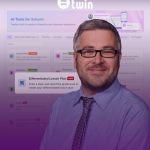
Jul 31, 2025 | Teacher Tips
This blog was last updated on 31 July 2025
Presented by Twin Science, a global education technology company empowering educators through AI-enhanced learning solutions.
A Guide for Educators Facing Tech Overload
With new platforms launching almost daily, it’s easy to feel like you’re falling behind, or worse, unsure where to even begin. If you’re feeling overwhelmed, you’re not doing it wrong. The key is to start with tools that feel right for you, tools that align with your style, your students, and your goals. But you don’t need to be a tech expert to make confident, meaningful choices for your students.
You’ve probably asked yourself:
“Which AI tools are actually worth using in my classroom?”
“How do I know which ones are safe, relevant, and age-appropriate?”
“Do I have to change everything to keep up?”
The reality is that AI is evolving fast, but your classroom doesn’t need to. What you need is clarity, not complexity. You deserve tools that are designed for teachers first, not tech developers.
Contact us for our worldly renowned solutions to help you ready your classroom for the AI-powered world.

3 Questions to Help You Choose the Right AI Tools
Let’s break things down with a simple framework:
1. Is this tool built for educators?
Many AI tools were made for business, not education. Before choosing a platform, ask:
-
Does this tool support learning goals I already have?
-
Is it aligned with classroom values like safety, inclusivity, and clarity?
-
Does it complement, not replace, what I already do well.
2. Is it adaptable to my classroom needs?
No two classrooms are the same. A good AI tool should meet you where you are:
-
Can I adjust it for different age groups or learning levels?
-
Can I use it with or without internet?
-
Does it support STEM and AI literacy without requiring coding knowledge?
3. Does it empower my students without replacing me?
A great AI tool should enhance your role as an educator. It should help you:
-
Free up time to focus on your students
-
Offer more personalized feedback
-
Spark creativity and deeper understanding

It can be exhausting to look for a platform that matches with all of these questions. Thankfully, you don’t have to look:
At Twin, our learning vision is grounded in compassion, not complexity. We know you’re balancing a lot.
- Twin’s AI solutions are designed for educators, with teacher-led exploration, hands-on kits, and classroom-ready content that makes sense on Day One.
- Twin’s learning solutions work with and without screens, and can flex between playful group activities or quiet individual learning, depending on what your students need.
- Twin’s AI-powered tools give students room to explore while keeping you at the center of the learning experience.
As an educator, you need to help students understand what artificial intelligence is and how they can thrive in an AI-powered world. The globally renowned solutions of Twin is here to help you do just that.
Get in contact with us so you and your classroom grows in todays modern world.
Final Thought: You’re the Guide, Not the Gadget
AI can’t replace you, and it shouldn’t try to. With so many tools out there, it’s easy to feel overwhelmed. But you don’t need to figure it all out alone. At Twin, we design hands-on, playful AI and STEM solutions that fit real classrooms, not ideal ones. Our vision is to help you build a learning space where curiosity thrives, equity grows, and every student feels empowered to explore. The best AI tools support your impact, helping students build not just tech skills, but confidence, curiosity, and compassion.
At Twin, we design with your classroom in mind. You bring the heart. We bring the tools.
Empower your students today.
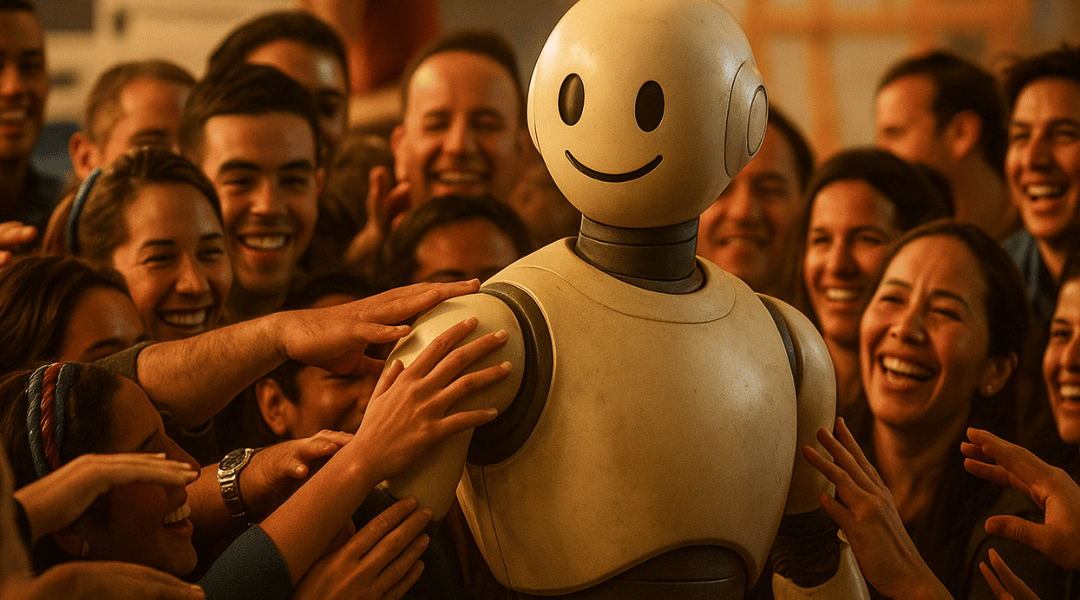
Jul 30, 2025 | Teacher Tips
This content was last updated on 7 August 2025
This blog is presented by Twin Science, a global education technology company empowering educators through AI-enhanced learning solutions.
Why Does Equity in AI Education Matter?
Why do concerns about equity and access matter for you as an educator when it comes to AI?
AI in Education brings new hope for engaging, personalized learning, but it also raises hard questions. You might find yourself wondering: “Will all my students have the same chance to succeed? What happens to the ones with less?” The reality is, not every classroom or home has equal resources. Some students have high-speed internet, up-to-date devices, and quiet places to study. Others may face unreliable connections, crowded environments, or even unfamiliarity with digital tools.
Educators like you need learning solutions that bridge curriculum goals and the real-world skills your students need. This is why solutions like those from Twin Science are designed not just to meet standards, but to support you in creating a more engaging and relevant classroom, right from day one. If you’re looking for gentle, classroom-ready ideas that meet every learner regardless of wherever they are, discover Twin’s hands-on AI learning solutions crafted to help you create opportunities for all.

What Gets in the Way of True Access?
What barriers might you face as you try to bring AI, STEM, and hands-on learning into every student’s reach?
Barriers to access can be both obvious and hidden. Sometimes it’s as simple as lacking enough devices or internet for every student. Other times, the obstacles are subtle, like AI tools designed with only one type of learner in mind, or lessons that don’t reflect the cultures and experiences of your classroom. Language differences, diverse abilities, and gaps in confidence can make technology feel out of reach for some children.
And when you’re already stretched thin, it’s normal to worry that you’re falling short. Please know that your efforts matter, and you’re not expected to have all the answers at once. Small steps, such as adapting activities to different needs, celebrating each learner’s progress, and seeking out inclusive resources, make a real difference. Even a tiny spark of curiosity or connection can set a student on a lifelong journey.

Jul 24, 2025 | Teacher Tips
This blog was last updated on 7 August 2025
This blog is presented by Twin Science, a global education technology company empowering educators through AI-enhanced learning solutions.
Why Does AI Matter in Today’s Classrooms?
How is AI relevant to everyday teaching and learning? Artificial Intelligence (AI) is rapidly transforming not just workplaces but also the way students learn, solve problems, and collaborate. For educators such as yourself, building AI literacy isn’t about teaching advanced coding, it’s about preparing students to navigate and critically evaluate technology in their daily lives. Not offering this foundation will cause the students to not reach their potential in the AI transformed world.
If you’re looking for practical, classroom-tested ways to build AI literacy and STEM confidence, explore classroom-ready AI learning solutions that are easy to adopt and designed for real teachers.
What’s the First Step for Teachers New to AI?
Where should I begin if I have limited experience with AI or edtech? Start small with hands-on learning experiences. You don’t need to be an expert in AI, focus on introducing simple activities that spark curiosity.
For example, using Teacher AI Tools built for education lets you demonstrate how AI works with real-life examples, like sorting images or predicting weather patterns. Many educators report higher student engagement when using STEM projects that blend coding, robotics, and problem-solving, especially when supported by learning solutions like those from Twin Science.
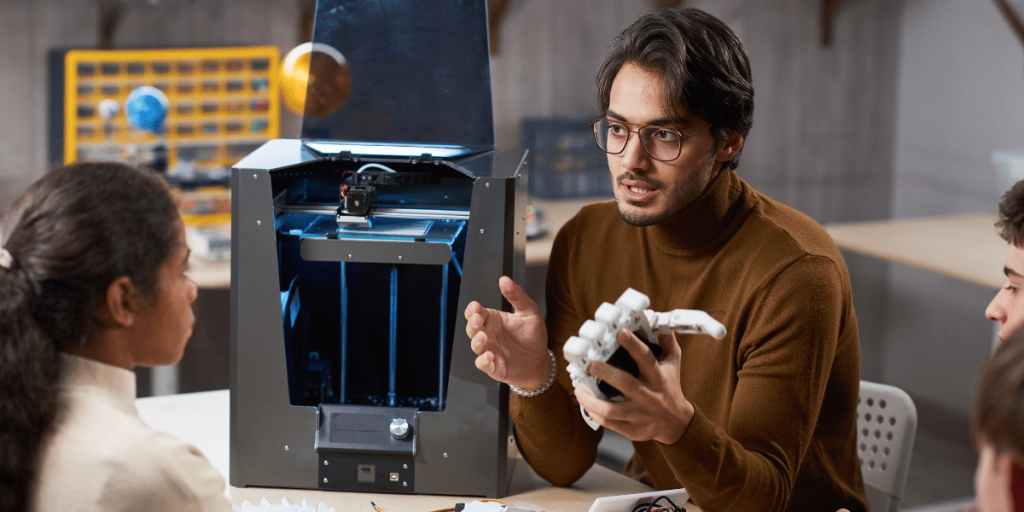
How Can AI Support Everyday Lessons?
What are some practical ways to use AI in regular lessons? Integrate AI through classroom discussions, digital activities, or collaborative projects. For instance, use an AI-powered tool to analyze class survey results, or let students experiment with simple machine learning models that predict outcomes. These experiences not only build technical skills but also foster teamwork, creativity, and critical thinking.
With Twin Science Education Solutions, teachers have reported that hands-on AI activities make STEM topics more approachable and memorable – start using proven edtech learning solutions to ensure your classroom stays future-ready.
What Professional Support is Available?
How can educators keep building their skills with AI and STEM? You’re not alone on this journey. Professional development for AI in education is increasingly accessible, with online courses, webinars, and teacher communities available from leading edtech organizations. Twin Science regularly offers workshops and resource kits designed for educators at every level of AI literacy. These opportunities help you stay up-to-date and confident as you bring new learning solutions to your students.

Conclusion
Getting started with AI in teaching doesn’t require advanced technical knowledge, just a willingness to try hands-on activities and use classroom-ready tools. By focusing on practical steps and trusted resources, you can lead your students into the future of learning. You can find all of these steps through one single solution right now.
Empower your students today.
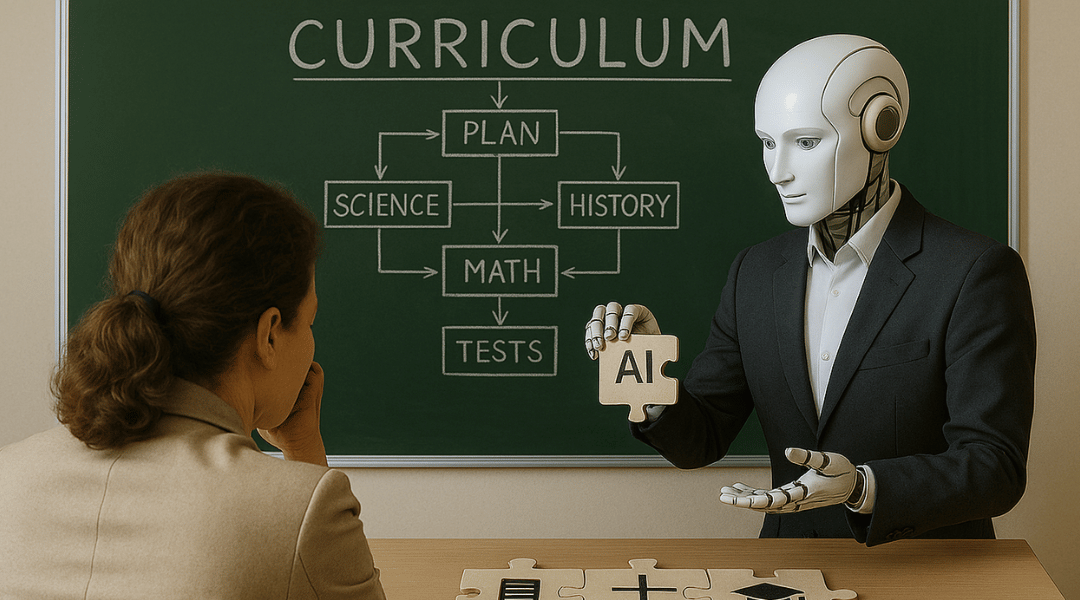
Jul 24, 2025 | Teacher Tips
This blog was last updated on 7 August 2025
This blog is presented by Twin Science, a global education technology company empowering educators through AI-enhanced learning solutions.
What Is Curriculum Misalignment with AI and Why Does It Matter?
Are today’s AI tools really designed for my school’s curriculum? Teachers everywhere, including you, want to bring the excitement of AI in education into their classrooms. But many quickly realize a common challenge: most AI tools and content don’t fit easily into local or national curriculum requirements. This may create a gap, leaving such as yourself unsure how to deliver AI literacy without losing focus on existing STEM objectives or hands-on learning.
If you’re asking, “How can I use AI meaningfully without straying from what I’m supposed to teach?” you’re not alone.
Educators like you need learning solutions that bridge curriculum goals and the real-world skills your students need. This is why solutions like those from Twin Science are designed not just to meet standards, but to support you in creating a more engaging and relevant classroom, right from day one.
Start using classroom-ready tools that make integrating AI simple and relevant from day one.
How Can You Align AI Learning with Your Curriculum?
How do I teach AI without sacrificing curriculum standards? The key is to map AI literacy and STEM topics to your curriculum’s learning outcomes. Start by identifying existing units, such as problem-solving in math, or data interpretation in science, where AI concepts naturally fit. Then, use teacher AI tools that are designed to plug into standard classroom activities.
For example, many educators report higher engagement when using STEM solutions like those from Twin Science for hands-on experiments in circuits or robotics. This approach means you’re not “adding more”, you’re enhancing what’s already required, using edtech learning solutions to spark curiosity and critical thinking.
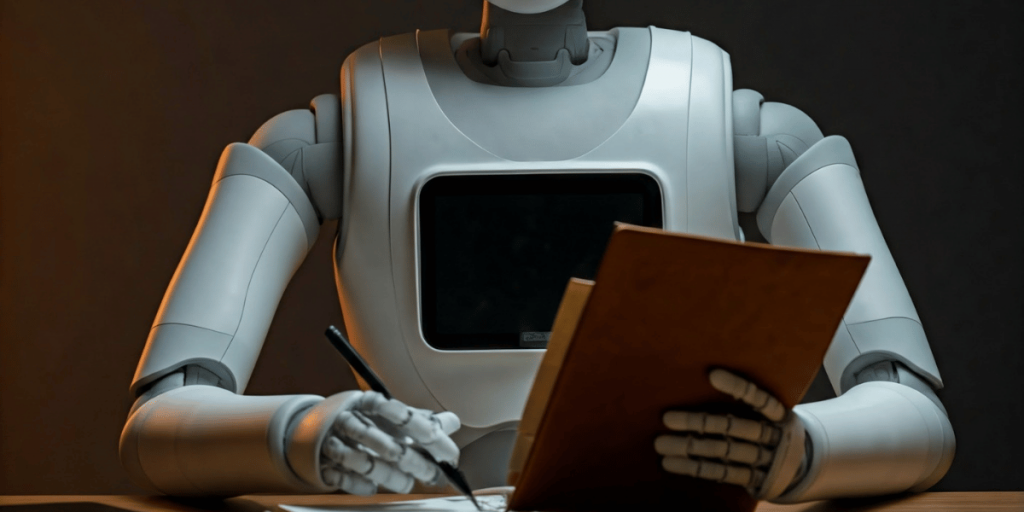
What Practical Steps Can Teachers Take Right Now?
As AI becomes a daily part of student life, it’s essential to equip classrooms now. How can you start using AI in your classroom today, without a full curriculum rewrite?
1- Start Small: Choose one lesson or project where AI can add real value, such as using an AI-powered science simulation or letting students build simple machine learning models.
2- Leverage Teacher-Friendly Tools: Platforms like Twin Education Solutions are designed for educators, making it easy to introduce AI concepts without extra prep.
3- Connect to Real-World Applications: Highlight how AI and STEM shape the world, helping students see the relevance beyond exams.
4- Use Peer-Reviewed Guidance: Tap into resources from trusted organizations to stay updated on classroom-tested methods.
Lucky for you, Twin Science includes all four steps. Start using classroom-ready AI tools that support your teaching goals and student engagement quickly and effectively.
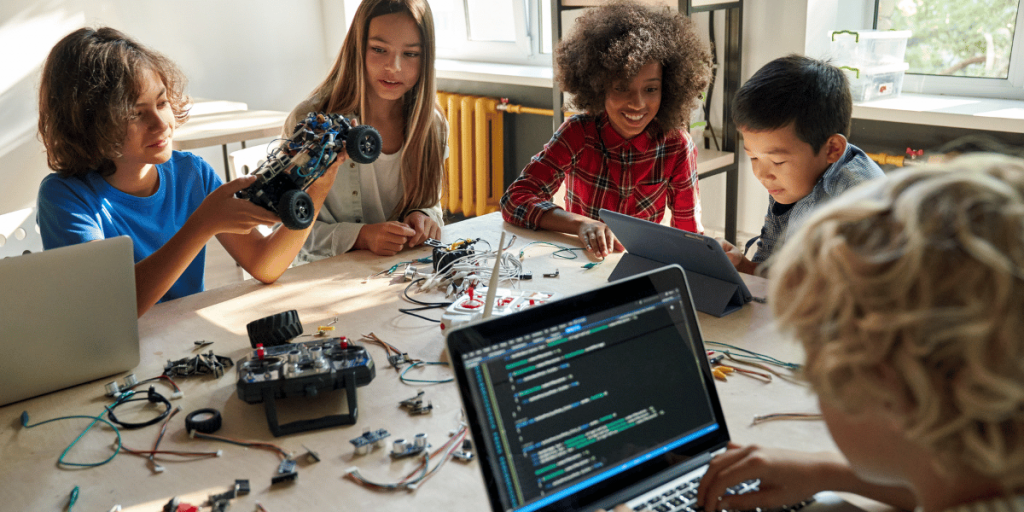
How Does Hands-On Learning Bridge the Gap?
Can AI be hands-on, not just digital? Absolutely. Research shows that hands-on learning remains essential for deep STEM understanding. By incorporating physical tools, real data sets, and group problem-solving, you foster both AI literacy and teamwork.
Teachers using Twin Science’s STEM kits find that hands-on experiences help students connect abstract AI ideas to tangible outcomes, preparing them for both academic and real-world success.
Twin’s learning vision is to make this experience personal for every learner, active rather than passive, and always rooted in real-world purpose. You’ll find that even small moments of hands-on success can spark curiosity, build resilience, and inspire your students to become creative problem solvers, qualities that matter far beyond exams.
Ready to Align AI with Your Curriculum?
Fitting AI into your curriculum doesn’t have to be a struggle. By choosing the right AI tools for teachers and focusing on hands-on STEM activities, you can make AI literacy accessible and relevant, no curriculum overhaul needed. You can access these tools now:
Elevate your classroom today.

Jul 24, 2025 | Teacher Tips
This blog was last updated on 24 July 2025
This blog is presented by Twin Science, a global education technology company empowering educators through AI-enhanced solutions.
What Is AI Literacy, and Why Does It Matter for Teachers?
How does AI literacy impact the modern classroom, and why should educators care? AI literacy, the ability to understand and responsibly use artificial intelligence, has quickly become essential in today’s education landscape. As AI in Education transforms both what and how we teach, educators such as yourself face a critical challenge: How can you guide students in an AI-driven world if they haven’t built AI literacy themselves?
At Twin, we know that navigating new technology can feel daunting. You’re not expected to do it alone. Our vision is to walk beside you, offering gentle support and practical tools as you help your students thrive in a changing world.
If you’ve ever wondered where to start with AI or how to translate new technology into real classroom value, you’re not alone. We’ve developed hands-on learning solutions that help teachers as yourself explore classroom-ready tools, discover practical AI resources, and bring STEM to life for every learner.
Get your classroom started with hands-on AI tools today.
Where Are the Gaps in AI Literacy for Teachers?
What are the real obstacles preventing educators from building AI literacy? Many teachers feel left out of the AI conversation, often due to limited training, a lack of clear resources, and the fast pace of edtech innovation. Terms like “machine learning” or “algorithmic bias” can feel overwhelming, especially without direct classroom examples or teacher-focused guidance.
As schools adopt more AI tools and STEM content, educators need practical, reliable pathways to build confidence, not just with theory, but with classroom-tested strategies. As AI becomes a daily part of student life, it’s essential to equip classrooms now. Start using teacher AI tools and get access to Twin Science learning solutions that make AI literacy both accessible and actionable.

How Can Educators Build AI Literacy With Confidence?
What are the most effective ways to develop AI literacy in practical, classroom-focused ways? Successful AI literacy programs start with hands-on, teacher-friendly approaches. This could mean using STEM solutions for real-world problem solving, integrating AI-powered edtech platforms that offer clear guidance, or participating in professional development aligned with ISTE standards.
You don’t need to become an AI expert overnight. With Twin, you have a companion to help you take small, meaningful steps, so you can focus on connecting with your students and making learning real.
What Misconceptions Are Holding Teachers Back?
Why do some educators hesitate to integrate AI in their classrooms? A common barrier to AI adoption in education is the belief that it’s only for tech experts or computer science teachers. But AI in education isn’t about mastering complex algorithms, it’s about recognizing AI’s role in everyday tools like search engines, learning apps, or even digital grading systems.
Educators such as yourself may also worry that AI will replace their role, when in fact, it enhances your ability to personalize instruction, give feedback, and create adaptive learning environments. Breaking down these myths starts with showing teachers how AI tools fit into what they already do.
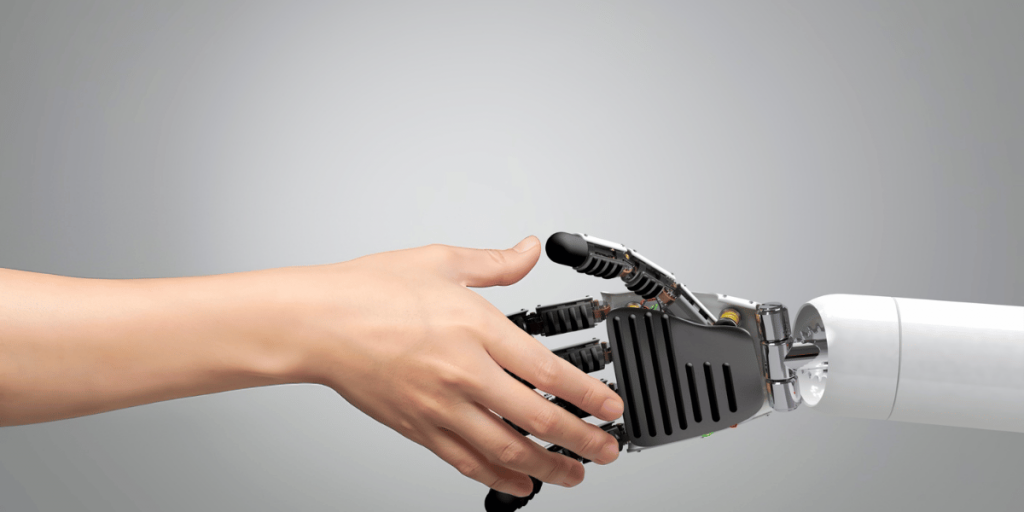
How Can Schools Build a Culture of AI Literacy?
What can schools do to support long-term AI readiness among staff? AI literacy cannot rest on individual teachers alone. To create sustainable impact, schools need to embed AI into professional development, curriculum planning, and technology adoption strategies.
This means aligning PD with frameworks like ISTE standards, ensuring leadership supports classroom experimentation, and providing time for teachers to explore AI tools together. Schools that invest in hands-on learning environments, peer training, and cross-disciplinary collaboration see faster adoption and deeper impact.
Why Now? Preparing Classrooms for an AI-Driven Future
How can teachers take meaningful first steps starting today? The need for AI literacy is urgent and growing. With AI already shaping everything from personalized learning to real-time feedback, the sooner educators build confidence with these tools, the more empowered their students will be.
We’re here to help you feel supported and valued as you lead your classroom into the future, with heart, with confidence, and always with compassion. With Twin by your side, you never have to take this journey alone.
Start by selecting accessible, classroom-tested resources that align with your STEM goals and make AI a living part of daily learning.
Start the conversation today.
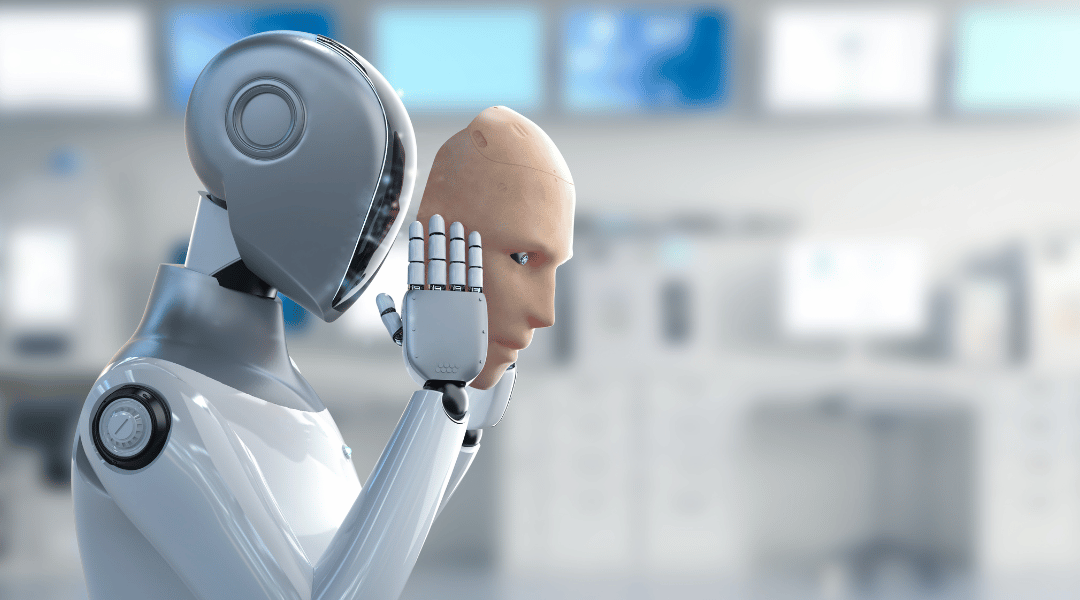
Jul 20, 2025 | Teacher Tips
This content was last updated on 21 July 2025
Presented by Twin Science, a global edtech innovator equipping educators with AI-powered learning tools.
As AI integrates into classrooms worldwide, there’s one critical question educators are asking:
“Could AI take my job?”
It’s a valid concern. With technology growing smarter, teaching roles are undeniably evolving. But if you’re a teacher, we’re here to tell you: AI isn’t here to replace you, it’s here to amplify your impact.
Explore classroom-ready solutions that boost AI literacy, refine your teaching strategies, and help you lead this transition with confidence.
Why Do Educators Fear Job Displacement?
As an educator, it’s understandable to worry about the future, especially in a world where almost every industry is being rapidly evolved by AI. Your worry stems from the idea that AI might handle your core teaching tasks, instruction, grading, even managing classrooms. Yet AI in education isn’t built to replicate your judgment or the relational heart of teaching. Instead, it helps you with time-consuming tasks: automating feedback, tailoring learning paths, or streamlining admin work.
This shift frees teachers like yourself to focus on what truly matters: nurturing curiosity, building trust, and guiding deeper thinking.

How Can AI Support Teachers?
Modern AI tools can help with:
-
Instant feedback for students
-
Customized lesson adjustments
-
Data-driven insights on progress
-
Language support for diverse learners
These aren’t substitutes; they’re enhancements. Picture AI as your teaching assistant: it handles logistics, but you remain the heart of the classroom. Take Twin Science’s approach: hands-on learning solutions blended with AI-driven modules. These solutions don’t remove you, they expand your capabilities. If you lack AI literacy as an educator, you’re missing out on an immense potential for enhancing your classroom.
Thankfully, you can easily close this gap with the help of Twin Science. Start the conversation today and start adopting solutions that prioritize your irreplaceable role in the industry.
Staying Indispensable in an AI-Driven Era
To thrive, you should treat AI literacy as a professional asset. This doesn’t require coding expertise, just clarity on AI’s limits, ethical student use, and modeling digital discernment.
UNESCO asserts that AI in education should serve human potential, not just efficiency.
PD programs on AI are multiplying. The more adept you become, the more you’ll shape technology, not the other way around.
What AI Cannot Replicate
Even the most advanced AI lacks:
-
Emotional intuition
-
Ethical mentorship
-
Genuine rapport
-
Cultural sensitivity
-
Improvised creativity
AI won’t share a student’s excitement, sense their unspoken struggles, or pivot a lesson based on the room’s energy like you do. That’s why modern STEM education must balance tech skills with human-centric teaching.

The Bottom Line: AI Elevates, Doesn’t Eliminate
The real question isn’t about whether AI can replace you, it’s about how you can use it to improve your effectivity in the classroom. AI can help teachers like yourself to focus on your uniquely human strengths. By adopting AI thoughtfully, you’re not stepping back, you’re advancing. You’re ensuring technology supports your role, not sidelines it. Ready to begin? Twin Science’s AI and STEM solutions are designed to empower your teaching, never to replace it.
Get in contact to secure your classroom solution and keep educators at the center of learning.



















